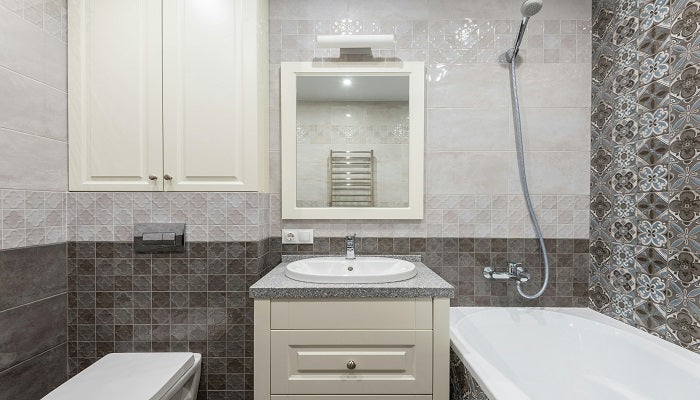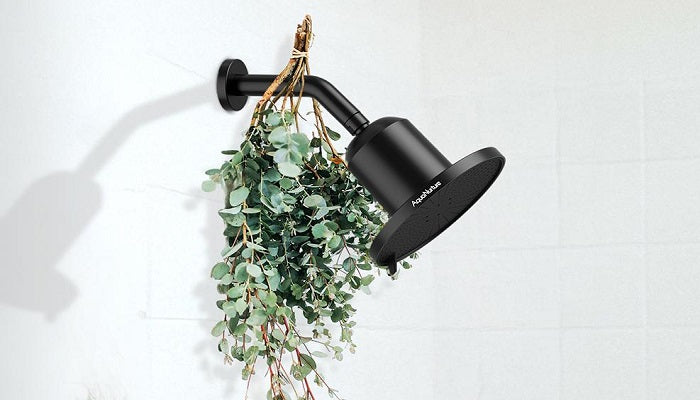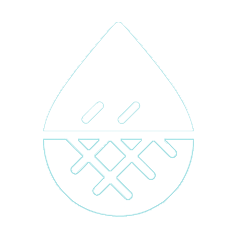Imagine a tall glass of water on your kitchen counter, sparkling in the sunlight—pure, refreshing, and safe. But turn on the shower, and the story changes. That same water may carry hidden culprits: chlorine that dries out skin, minerals that dull hair, and particles that stiffen laundry. You can't see them in a glass, but you can feel them on your skin, smell them in the steam, and notice their effects over time.
This leads many homeowners to ask: Do I really need a whole-house water filtration system? While these systems can make a big difference in water quality, they aren't essential for everyone. The smarter approach is to match the filter to your specific needs—focusing on where cleaner water will make the biggest difference in your daily life.

What Is a Whole-House Water Filtration System?
A whole-house water filtration system does exactly what its name suggests—it cleans the water for the entire home. A whole-house water filter is a filtration system that removes specific contaminants from the water that enters your home. It is typically positioned near the water shut-off valve to your home so it catches water at the source of your existing plumbing line. Different types of water filters target common contaminants in your home's water.
Think of a whole-house water filtration system as a security checkpoint at the very entrance to your home's water supply. Installed at the main water line, it filters every drop before it reaches the kitchen faucet, the washing machine, or the showerhead.These systems are built to tackle particles, improve taste, and remove unpleasant odors from every tap. Some models even combine filtration with water softening, offering a two-in-one solution.
How Does a Whole-House Water Filtration System Work?
Once the system is installed, it becomes the first stop for all incoming water. Here's how the process works:
Pre-filtration
The first layer screens out larger particles like sand, dirt, rust, and sediment that could clog pipes or damage appliances. This step protects the more delicate filtration components that follow and prolongs their lifespan.
Main Filtration Media
This is where most of the water treatment happens. Common filter materials include activated carbon blocks, which excel at removing chlorine, chemical odors, and volatile organic compounds (VOCs) that affect taste and smell. KDF (Kinetic Degradation Fluxion) media is another popular choice; it's highly effective at reducing heavy metals like lead and mercury, controlling bacteria and algae growth, and removing chlorine.
Specialty or Optional Filters
Depending on your water quality needs, additional components may be added. For instance, iron filters target iron and manganese to prevent reddish stains and metallic taste. Some systems include water softeners that reduce hardness minerals like calcium and magnesium, preventing scale buildup. UV (ultraviolet) purifiers are sometimes included to neutralize bacteria and viruses, particularly in well water systems.
From that point on, showers smell fresher, coffee tastes better, and clothes feel softer—because everything is running on cleaner water.

Do You Really Need a Whole-House Water Filtration System?
The short answer: not always. A whole-house system makes the most sense when a water test shows specific problems—like excessive chlorine, sediment, or minerals. Many households already receive water that meets safety standards, so a whole-home filter can end up being more of a luxury than a necessity.
That said, for some homes, it's a game changer. A quality whole-house system can:
- Eliminate the strong chlorine odor every time the shower runs
- Prevent rust or orange stains from damaging bathroom fixtures
- Reduce hard water spots on dishes and slow mineral buildup in appliances
- Make laundry colors brighter and fabrics feel softer
If water issues show up in multiple parts of the home—not just in the kitchen—whole-house filtration can make daily life noticeably more comfortable.
Is a Whole-House Water Filtration System Worth It?
It can be—if water quality issues affect cooking, cleaning, bathing, and appliance lifespan.
Benefits include
- Cleaner, better-tasting water from every tap
- Reduced scale buildup in plumbing and appliances
- Softer laundry and shinier dishes
- Less chlorine exposure for skin and hair
Drawbacks include
- High upfront cost (often thousands of dollars)
- Professional installation required
- Ongoing filter replacements
- Not ideal for removing ultra-fine particles that some point-of-use filters handle better
For many households, targeted solutions—like filtered shower heads, under-sink units, or faucet filters—offer the right balance of performance, convenience, and cost.

Choosing the Best Filter for Your Needs
If the main concern is drinking and cooking water
When tap water tastes like chlorine, smells strange, or contains contaminants like lead, pesticides, or microplastics, focus filtration right at the drinking source. Under-sink filters, faucet filters, pitchers, or reverse osmosis (RO) systems are effective and cost-efficient.
If the main concern is skin and hair health
Hard water minerals and chlorine strip natural oils from skin and hair, leading to dryness, irritation, and frizz. A filtration shower head is the fastest, most direct fix—removing these irritants before they can cause damage. Installation takes minutes, costs far less than a whole-house system, and delivers immediate results.
Under-Sink Activated Carbon Filters: Clean Water Straight from the Tap
Under-sink activated carbon filters are one of the most popular solutions for improving drinking water quality. Installed discreetly beneath the kitchen sink, these filters treat water right before it reaches the dedicated drinking water faucet.
How It Works?
Activated carbon is a highly porous material that traps impurities through a process called adsorption. As water passes through the carbon filter, contaminants like chlorine, volatile organic compounds (VOCs), pesticides, and unpleasant tastes and odors stick to the surface of the carbon granules. This process effectively improves water flavor and removes many common chemical pollutants.
Advantages
- Improves taste and odor by removing chlorine and organic chemicals
- Compact and easy to install with no major plumbing changes required
- Cost-effective compared to whole-house or more complex filtration systems
- Delivers filtered water directly where it's needed most — the drinking faucet
Disadvantages
- Does not remove all contaminants such as heavy metals, fluoride, or microorganism
- Filter cartridges require regular replacement (usually every 6 to 12 months) to maintain effectiveness
- Limited to one faucet and does not improve water quality for showers, laundry, or other taps
For homeowners focused on safe, great-tasting drinking water without the cost or hassle of whole-house filtration, under-sink activated carbon filters offer a practical and reliable option.

The Overlooked Everyday Upgrade:A Filtered Shower Head
If the main concern is protecting hair and skin from the harsh effects of hard water, a filter shower head often makes far more sense than investing in a whole-house filtration system. Hard water—rich in minerals like calcium and magnesium—can leave hair feeling dry and brittle while making skin tight, itchy, and prone to irritation. A filtered shower head directly targets the water used for bathing, where those minerals and other additives like chlorine have the greatest impact.
The convenience factor is hard to overlook. Installing a filtered shower head takes minutes, requires no plumbing expertise, and doesn't disrupt the rest of the home's water system. Whole-house filters, on the other hand, demand professional installation, ongoing maintenance, and a significant upfront investment—often in the thousands of dollars.
From an effectiveness standpoint, filtration shower heads can be surprisingly powerful. Many are designed with specialized media that reduce chlorine, trap sediment, and in some models, even condition the water to feel softer. Since the filter is placed exactly where the water meets skin and hair, the benefits are immediate and localized—no waiting, no complex adjustments.
Cost-effectiveness is another major advantage. Instead of paying to filter every drop of water that flows into the home—including water for toilets, lawn sprinklers, and dishwashers—a filtered shower head treats only the water that actually touches hair and skin. Replacement filters are affordable, and the savings in beauty products, hair treatments, and even dermatologist visits can quickly add up.
In short, if the goal is simply to enjoy softer hair, healthier skin, and a more pleasant shower experience, a filtered shower head delivers results faster, easier, and for a fraction of the cost of a whole-house system—without sacrificing comfort or quality.

Why Filtered Shower Heads Matter
Even when tap water is perfectly safe to drink, showers can still be a hidden source of irritation. Hard water carries minerals like calcium and magnesium that leave behind residue, making hair dry, frizzy, and harder to manage. Chlorine, often added to municipal water for disinfection, can strip natural oils from skin and hair, causing dryness, itchiness, and irritation. Under hot water, some of these chemicals can even vaporize, meaning they aren't just touching the skin—they're being breathed in. Over time, this can contribute to skin sensitivity, dull hair, and even lingering odors in the bathroom.
This is why a filter shower head is more than a luxury—it's a targeted, affordable way to protect skin, hair, and overall comfort without overhauling the entire home's plumbing.
How Does Filtered Shower Heads Work?
Think of a filtered shower head as your own little water purifier—just for the shower. Inside, it uses a replaceable cartridge filled with materials like activated carbon, KDF (short for Kinetic Degradation Fluxion), or even vitamin C to capture chlorine, reduce excess minerals, and block out other impurities before they ever touch your skin. Among these options, KDF-55 and calcium sulfite really stand out: they’re especially good at removing chlorine, heavy metals, and other irritants, and they even stay effective in hot water where some filters fall short. The best part? Installation takes only a few minutes, and the difference is noticeable right away—your skin feels less tight, your hair looks shinier and smoother, and the air loses that harsh “pool water” smell.
For many households, the water used for bathing has more impact on daily comfort than the water poured into a glass. A high-quality filtered shower head delivers noticeable benefits day after day—without the hefty cost or maintenance demands of a whole-house filtration system. It's a small, smart upgrade that can make every morning start on a better note.
Conclusion:Choose the filter that suits your situation.
A whole-house water filtration system can be a powerful solution—but it’s not the right choice for everyone. If water tests show no major contaminants, smaller, targeted systems often make more sense. For drinking water, an under-sink or faucet filter works well. For skin and hair, a filtered shower head offers fast, noticeable relief without the cost and complexity of a whole-home system.
Match the filter to the problem:
- Iron stains? Use a specialized iron filter.
- Chlorine taste? Try a faucet-mounted filter.
- Hard water dryness? Install a filtered shower head.
By addressing the biggest issues right where they occur—often starting in the shower—you can enjoy cleaner water, healthier skin and hair, and a better everyday experience.

Frequently Asked Questions (FAQ) About Hard Water, Filtration, and More
Q1: What is a whole-house water filtration system?
A whole-house system is installed at the point where water enters your home. This way, every tap — kitchen, bathroom, laundry — gets filtered water. It’s designed to remove chlorine, sediment, and sometimes minerals before water flows into your pipes.
Q2: Do I really need a whole-house water filtration system?
Not always. If your water test shows widespread problems (like heavy sediment, high chlorine, or mineral buildup damaging appliances), it can be worth the investment. But if your main concerns are skin dryness, dull hair, or the taste of drinking water, smaller filters like showerhead filters or under-sink units may be enough.
Q3: How much does a whole-house system cost?
A full system can range from $1,000 to $5,000 or more, depending on size, installation, and filter type. On top of that, filters usually need replacing every 6–12 months, adding ongoing costs.
Q4: What’s the difference between a showerhead filter and a whole-house system?
Whole-house filters treat all water before it enters your home, helping protect pipes and appliances. Showerhead filters target the water you bathe in, removing chlorine and minerals that irritate skin and damage hair. They’re far cheaper, easy to install, and deliver benefits right where most people feel water issues the most.
Q5: Are showerhead filters effective for hard water?
Yes — while they don’t “soften” water in the technical sense, high-quality showerhead filters can reduce chlorine, minerals, and sediment. This helps with dry skin, scalp irritation, and brittle hair.
Q6: How do I know which filtration option is best for my home?
Start with a simple water test kit or ask your local water provider for a quality report. This tells you whether your main issues are chlorine, hard minerals, or other contaminants — and helps you choose the most effective (and cost-efficient) filter solution.








Leave a comment
This site is protected by hCaptcha and the hCaptcha Privacy Policy and Terms of Service apply.